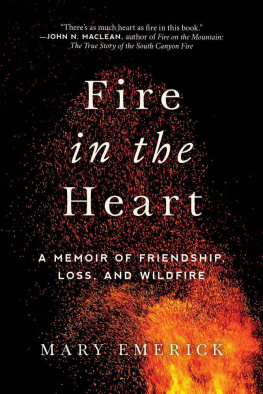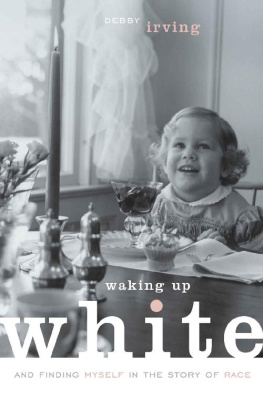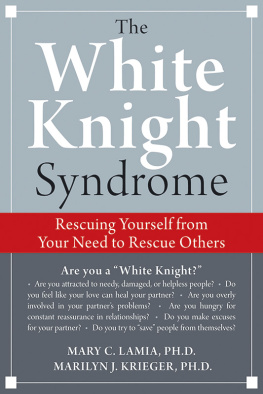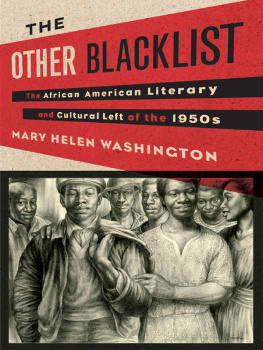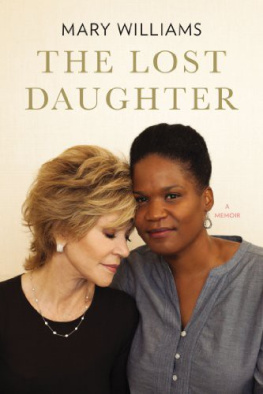Praise for
These Walls Between Us
This is a powerful book with an important lesson that we all must learn in trying to understand othersa book that both Blacks and whites should read so that we can enter into a productive dialogue with each other.
Reverend John Reynolds, author of The Fight for Freedom: A Memoir of My Years in the Civil Rights Movement
Unique, fascinating, and complex, Wendy Sanfords wonderful memoir is so rare and engaging that I read the book continuously over twelve hours without wanting to stop.
Peggy McIntosh, senior research scientist and former associate director of the Wellesley Centers for Women and author of White Privilege: Unpacking the Invisible Knapsack (1989) and On Privilege, Fraudulence, and Teaching As Learning: Selected Essays 19812019
White privilege is like an invisible thread that maintains the status quo. Thank goodness Wendy Sanford is doing the work that only she can do!
Byllye Avery, founder of Black Womens Health Imperative
Wendys story demands just recognition of domestic workers, Black women, and women of color for the essential yet invisible role they play in caring for so many families. Wendys story calls on all of us to intentionally dismantle the walls that have kept us from recognizing and actively combating the white supremacist culture that shows up in our own homes.
Stacy Kono, executive director of Hand in Hand: The Domestic Employers Network
This tender and evocative story about friendship across racial and class lines is an important guide for living into this time of racial reckoning. Sanfords unflinching honesty, insight, and wisdom had me saying, out loud, again and again, Wow, that is so true!
Catherine Whitmire, author of Practicing Peace: A Devotional Walk through the Quaker Tradition and Plain Living: A Quaker Path to Simplicity
The politics are crystal clear at all levels, the characters are fascinating and its a superb read! Sanford presents the humanity of the characters, in all their contradictoriness, while remaining unrelenting in her condemnation of systemic racial and class violence. White people are all complicit in racism, and all responsible for taking it down, relationship by relationship. This memoir shows how tortuous and slippery that is... and yet, between humans who will recognize one another as such, always possible.
James Seale-Collazo, Faculty, Escuela Secondaria, University of Puerto Rico
These Walls Between Us is a deeply researched and unflinchingly thoughtful account... I find Sanfords work uplifting in its openness. She seeks to educate, not castigate, and the narrative force of her story is compelling in its own right. This book is a clear-eyed and riveting gift to those of us who would rather try to repair than ignore this countrys tattered history of exploitation. In less accomplished hands, this might be an exercise in hand-wringing and self-doubt, but Wendy Sanford is a confident and authoritative narrator who makes this timely book at once accessible, gripping, and instructive.
Robin Hemley, author of Borderline Citizen: Dispatches from The Outskirts of Nationhood
An emotional glimpse into a lifetime anti-racism journey. Non-profit board members, government leaders, and executives from all sectors will be transformed by Wendys journey and her painfully earned pearls of wisdom on the effort to become an anti-racist white person.
Sue Gallagher, Chief Innovation Officer, Childrens Services Council of Broward County, FL
Ms. Sanfords story is a necessary read for todays young white people, especially college students interested in Africana studies, gender and womens studies, and sociology courses. Above all, this remarkable book is a moving testimony for all who believe in fairness and racial healing.
Pam Brooks, Associate Professor, Africana Studies Department, Oberlin College, and author of Boycotts, Buses, and Passes: Black Womens Resistance in the U.S. South and South Africa

Copyright 2021 Wendy Sanford
All rights reserved. No part of this publication may be reproduced, distributed, or transmitted in any form or by any means, including photocopying, recording, digital scanning, or other electronic or mechanical methods, without the prior written permission of the publisher, except in the case of brief quotations embodied in critical reviews and certain other noncommercial uses permitted by copyright law. For permission requests, please address She Writes Press.
Published 2021
Printed in the United States of America
Print ISBN: 978-1-64742-167-0
E-ISBN: 978-1-64742-168-7
Library of Congress Control Number: 2021905883
For information, address:
She Writes Press
1569 Solano Ave #546
Berkeley, CA 94707
She Writes Press is a division of SparkPoint Studio, LLC.
Book design by Stacey Aaronson
Photo credit for dedication page: Elisabeth Morrison
Notes of a Native Son
Copyright 1949, 1950, 1951, 1953, 1954, 1955 by James Baldwin
Reprinted with permission from Beacon Press, Boston Massachusetts
Excerpts from Like One of The Family by Alice Childress 1986. Used by permission of the Williams and Woodard families and SLD Associates LLC, . All Rights Reserved.
Antebellum House Party from HOW TO BE DRAWN by Terrance Hayes, copyright 2015 by Terrance Hayes. Used by permission of Penguin Books, an imprint of Penguin Publishing Group, a division of Penguin Random House LLC. All rights reserved.
All company and/or product names may be trade names, logos, trademarks, and/or registered trademarks and are the property of their respective owners.
Names and identifying characteristics have been changed to protect the privacy of certain individuals.
To Mary Norman and Polly Attwood
Beloved companions in the journey of my life

Unless the white community breaks its silence and determines that race is not a peripheral issue, but an issue central to the things that we say are valuable to America... the finest movement in the world will not cause racism to cease.
REVEREND JAMES LAWSON
I know that simply to be white is to be racist is the catchphrase some liberals use these days, but when will they begin hearing what supposedly they know?
CLAUDIA RANKINE, Just Us
If you walk on eggshells, I wont be able to talk to you the way I do.
MARY NORMAN
Contents
one
White People Swimming
two
Where We Came From
three
Learning the Habits of Dominance
four
Fog
five
Dream Wedding
six
Womanhood
seven
Beach Walk
eight
A New Canon
nine
Coming of Age
ten
Sister Outsider
eleven
Sanctuary
twelve
Good Daughter
thirteen
Equity
fourteen
Class Secret
fifteen
Heirlooms
sixteen
Like One of the Family
seventeen
Road Trip
Introduction
I GREW UP IN THE NORTHEAST UNITED STATES, AMIDST white people who thought ourselves a world apart from the white supremacists of the Ku Klux Klanthe violent, radical fringe. And yet, I grew up embedded in racist violence myself, just of a variety that was polite and normalized in American life, in which every institution advanced white people at the expense of people of color. I also toddled my first steps into a fraught zone between my white mothers blue-blood, owning-class family and my white fathers hard-scrabble-farm Georgia roots. I channeled both my mothers assumptions of superiority and my fathers urgent, resentful aspiration to rise.
Next page


